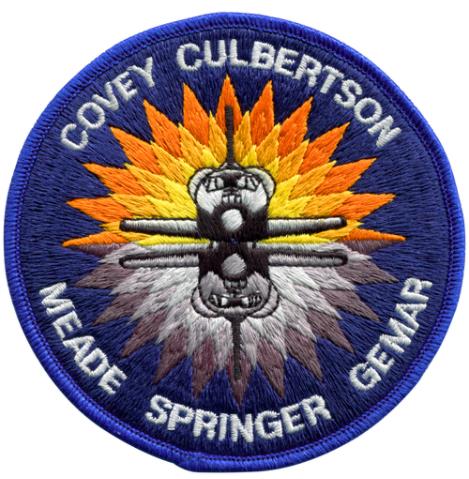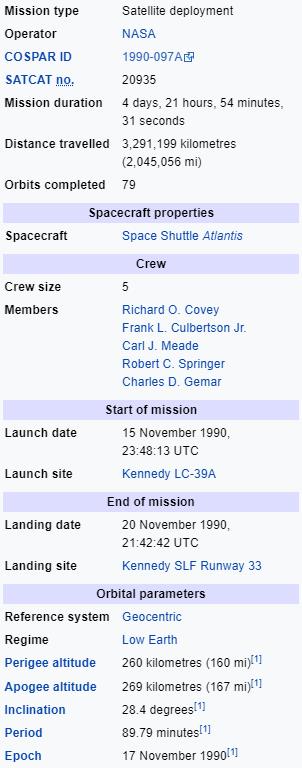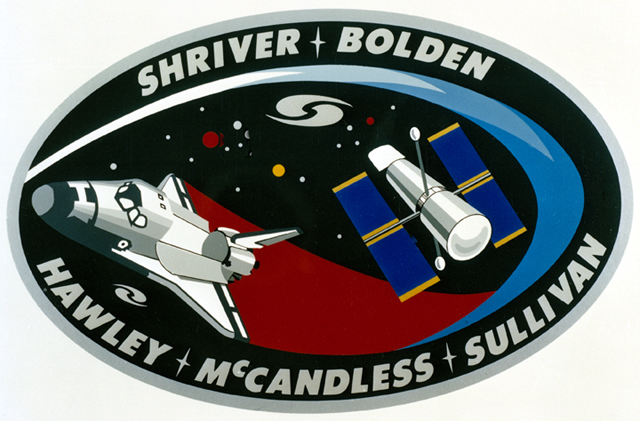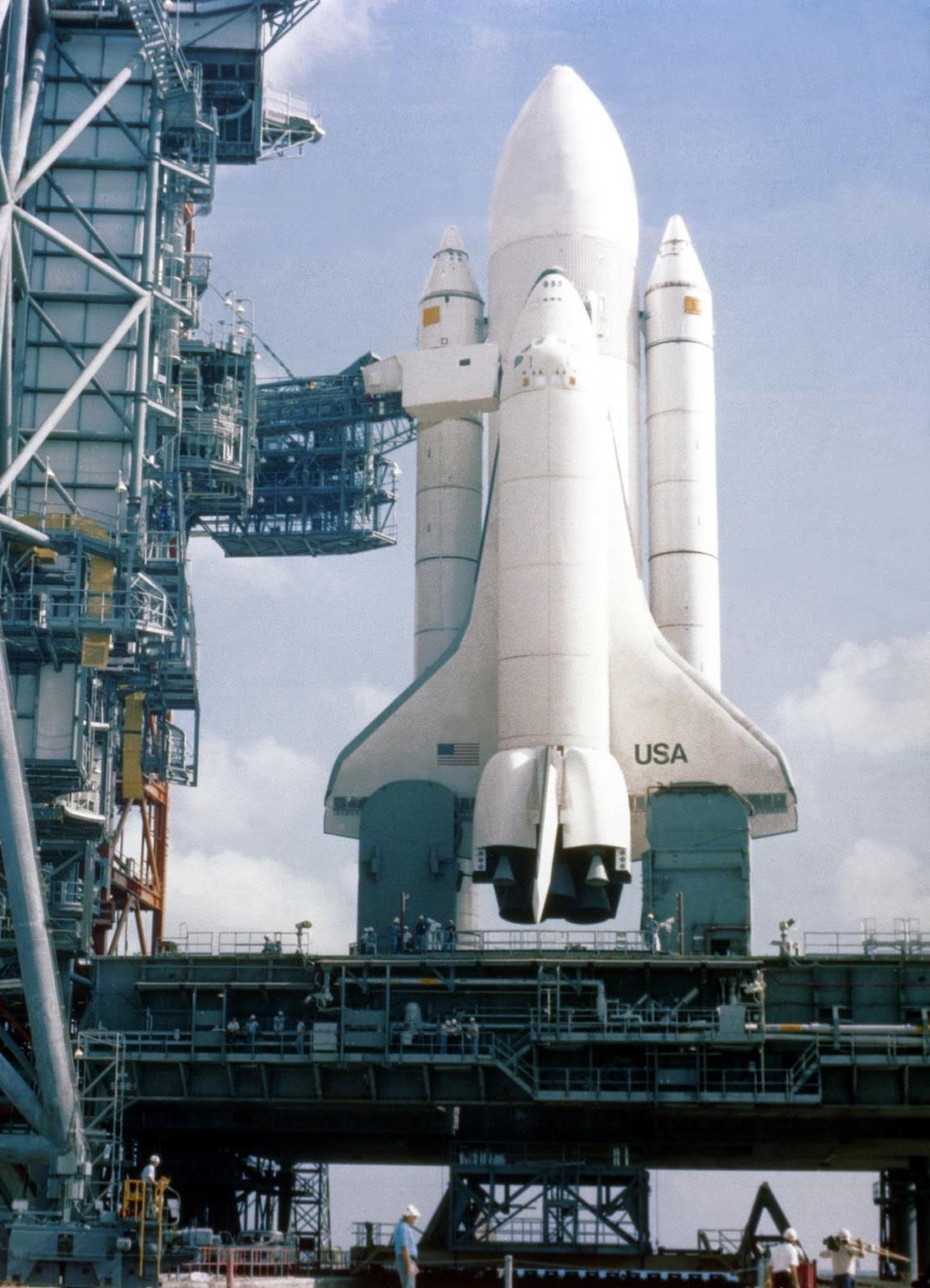Richard O. Covey
(Third Space Flight)
Frank L. Culberton Jr.
(First Space Flight) Mission Specialist 1:
Robert C. Springer
(Second Space Flight) Mission Specialist 2:
Carl J. Meade
(First Space Flight) Mission Specialist 3:
Charles D. Gemar
(First Space Flight)
STS-38 was a space shuttle mission by NASA using the Space Shuttle Atlantis. It was the 37th shuttle mission, and carried a classified payload for the US. Department of Defense. It was the 7th flight for Atlantis and the 7th flight dedicated to the Department of Defense. The mission was a 4-day mission that traveled more than 2 million miles and completed 79 revolutions. Atlantis landed at Kennedy Space Centre's Shuttle Landing Facility's runway 33. The launch was originally scheduled for July 1990, but was rescheduled due to a hydrogen leak found on Space Shuttle Columbia during the STS-35 countdown. During a rollback to the Orbiter Processing Facility Atlantis was damaged during a hail storm. The eventual launch date of 15 November 1990 was set due to a payload problem. The launch window was between 18:30 and 22:30 EST. The launch occurred at 18:48 EST.
A free template by Lucknowwebs.com for WYSIWYG WebBuilder 8
Astronauts:
STS-38 (R)
Study
Research
Main Index
Space Cosmology
Science Research
*
About
Science Research
Science Theories
Desk
Site Map
BookShelf
Copyright © by Nigel G Wilcox · All Rights reserved · E-Mail: ngwilcox100@gmail.com
Designed by Nigel G Wilcox
Powered By AM3L1A
Pages within this section: USA Shuttle Mission Flights
STS-38
Pages within this section:
32
M
8
SM
Sub-Menu
menu
-
33
34
35
36
37
38
39
Command Pilot:
The Space Shuttle Missions
Pilot:


According to Aviation Week, the shuttle initially entered a 204 kilometres (127 mi) x 519 kilometres (322 mi) orbit at an inclination of 28.45° to the equator. It then executed three OMS (orbital maneuvering system) burns, the last on orbit #4. The first of these circularized the orbit at 519 kilometres (322 mi).
The first classified payload was code-named USA-67, which was deployed from Atlantis' cargo bay on the 7th orbit and ignited its rocket motor at the ascending node of the 8th orbit to place it in a geo-synchronous transfer orbit. Aviation Week reported that USA-67 was a secret ELINT gathering satellite headed for geosynchronous orbit and launched to monitor the events during the first Gulf War in 1990. As a result of there being two upper stages aboard STS-38, USA-67 was originally believed to be a Magnum satellite like those deployed on STS-51-C and STS-33, which were launched via a two-stage IUS. Today it is believed that USA-67 was instead a secret SDS-2 military communications satellite, like those deployed on STS-28 and STS-53.
It is also believed that USA-67 was not the only satellite deployed during STS-38. A publicly released image of Atlantis' vertical stabilizer and upper aft bulkhead, similar to the one released from STS-53, confirms that the ASE (Airborne Support Equipment) for the IUS was absent from this flight. An explanation is that two separate satellites were deployed, using single-stage PAM-D modules. Rumors that appear to have been substantiated by the identification of an "unknown" geostationary satellite by amateur observers insist that the second payload was a stealth satellite known as Prowler, reportedly intended to covertly inspect other nation's geostationary satellites.














